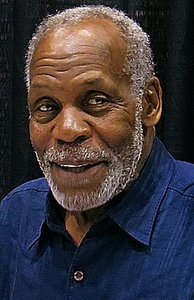How much do we know about epilepsy?
(CC0)
Epilepsy is perhaps the disease with the oldest record. Countless historical figures and recent celebrities have suffered from it. For example Alexander the Great, Julius Caesar, Michelangelo, Fyodor Dostoyevsky, Theodore Roosevelt, Lewis Carrol, Edgar Alan Poe, Charles Dickens, Richard Burton, Pyotr Tchaikovsky, Truman Capote, Danny Glover, Prince...

Alexander the Great (PD)
And yet, it is laden with stigma and the general public knows very little about it.

Julius Caesar (CC BY NC SA 2.0)
Did you know that epilepsy does not mean convulsion?. Most epilepsy patients never have a convulsive seizure.

Michelangelo (PD
Did you know that non-convulsive seizures are not absences? During such seizures, most of the patients perceive the world around them, sometimes in a distorted or strange way, but without losing consciousness.

Fiodor Dostoievski (PD)
Basic facts about the disease
Epilepsy affects four to forteen out of every thousand people. Let's say one in a hundred, to round off. This means that you probably know several people with epilepsy. Some of them hide it, others just don't know they have it.

Theodore Roosevelt (PD)
Epilepsy is diagnosed when a person has had at least two verified seizures. An encephalogram may be used, but it is only helpful if the patient has a seizure during the study. Therefore, the final diagnosis is always clinical, based on the patient's account of symptoms and experience.
Epileptic seizures are electrical discharges in the brain, which spread outside the normal channels of electrical flow between neurons. Sparks. Very soft, but out of control.

Lewis Carroll (PD)
The seizures can be generalized (when both brain hemispheres are affected) or partial (when only one hemisphere is affected). Partial seizures may be simple (discharges reach only one part of the affected hemisphere) or complex (discharges extend to other parts of the affected hemisphere).
Generalized seizures can be tonic-clonic (the infamous convulsions) or conscious (the misnamed absences). Partial seizures can be motor (for example, automatisms) sensory hallucinatory (flashes of colours, metallic flavours, smells) or psychic hallucinatory (sensation of strangeness, disorientation).
Around 60% of epilepsy cases have no identifiable cause, which is called an idiopathic epilepsy. In the rest, the origin of the epilepsy can be identified in malformations, trauma, or neurodegenerative diseases.

Edgar Allan Poe (PD)
In 80% of cases, epilepsy responds favourably to medication. The seizures became rare or disappear, and the patient can live a normal life. Of the remaining 20%, the so-called refractary cases, if the source of the discharges is identified sometimes surgery can be performed. In some people a vague nerve stimulator or VNS is installed, which is a device located in the thorax, which sends an electric shock to the vagus nerve when the patient approaches his ring to the chest, thus stoping the seizure. Others patients choose diet instead!
Indeed: one option for the treatment of epilepsy that does not respond to medication is the ketogenic diet, a program low in carbohydrates and high in fat. The ketogenic diet is a good example of alternative medicine that works... and then ceases to be alternative.

Charles Dickens (PD)
The epileptic seizures are triggered either without any reason, or because certain triggers are present. These triggers can be perceptive (flashing lights -as the famous Pokemos case-, dim lights, high or loud sounds, etc) or psychic (the evocation of a previous crisis, extreme stress, sleep depravation).
An epilepsy patient with an apropriate treatment can live a normal life. Only in some cases, the medicated patient must be careful of the triggers and/or avoid risky situations such as swimming or driving. The main disadvantage for the epileptic person is the stigma associated to the disease, due in large part to the fear and prejudice of others.

Richard Burton (PD)
Do you know what to do if someone has a seizure?
A person with a seizure falls to the floor and begins to shake violently. Sometimes he may scream or howl, or drool. In such cases
1- Do not put anything in his mouth. No, he won't swallow his tongue. No, he won't bite it. No, I said! That's a widespread myth that causes a risk: he won't swallow his tongue, but he may swallow whatever you put in his mouth.
2- Move away any hard or sharp object at his reach. Shakes are extremely violent, and blows can be ugly.
3- Put him on his side, so that he does not drown in case he vomits. It is not something that happens always, but it is a possibility, and it is better to prevent it.

Piotr Tchaikovsky (PD)
Do you know what to do if someone has a non-convulsive crisis, an "absence"?
1- Don't talk about him or behave as if he were not there. He listens to you and such attitude can be very frustrating. Stay with him, wait for the seizure to end, comfort him and ask if he needs anything.
2- Don't panic or look at him with fear. He probably can't understand your words but he can understand your tone. It can be disperating trying to calm down someone else while you're having a seizure.

Truman Capote (PD)
When to call a doctor?
1- If she is pregnant. The seizure itself does not affect the baby, but muscle movements or blows could do it.
2- If she gets hurt or hit too hard during the seizure. For the patient, the seizure itself is not traumatic. It is important that you understand that he is not suffering. But if he hits or hurts himself, he would be.
3- If the seizure does not stop for more than five minutes or if it starts again after ending. This is called an epileptic state and can have serious consequences, including death.

Danny Glober ( CC BY-SA 2.0, by 5of7)
Other things to know
If he screams during the seizure, don't panic. Even if the scream may sound horrendous, it does not manifest pain or fear, but only the inability to control the muscles of the chest and throat.
At the end of the seizure the patient is confused. Your self-control and serenity are very helpful. If he doesn't remember what happened, explain it to him calmly.
Seizures can be very tiring. Sometimes the patient falls asleep after having one. Let him rest, he is not dead.

Prince (CC BY-SA 2.0, by Nicolas Genin)
Finally
Do not stigmatice don't be an ignorant. Having epilepsy doesn't imply anything else about that person. It's not because of anything he's ever done in his life (which no one enabled you to judge anyway). It is not contagious. It doesn't produce violent outbursts (the lousy Hollywood librettist who spread that version deserves jail). It's not a psychosis.
Among your friends and acquaintances there are several epileptics. Just by statistics, you know between three and ten people with epilepsy. Know who they are, make them feel like you won't walk away from them if they tell you.
If someone close to you receives that diagnosis, don't be scared, much more serious are other diseases with a better public image, such as hypertension. Look for information on the Internet (start here or here), it is important that you understand what things to fear and what not.
And spread the word.
Thank you.
PS: An old post, in my blog, detailing the subjective experience of a seizure (in spanish).